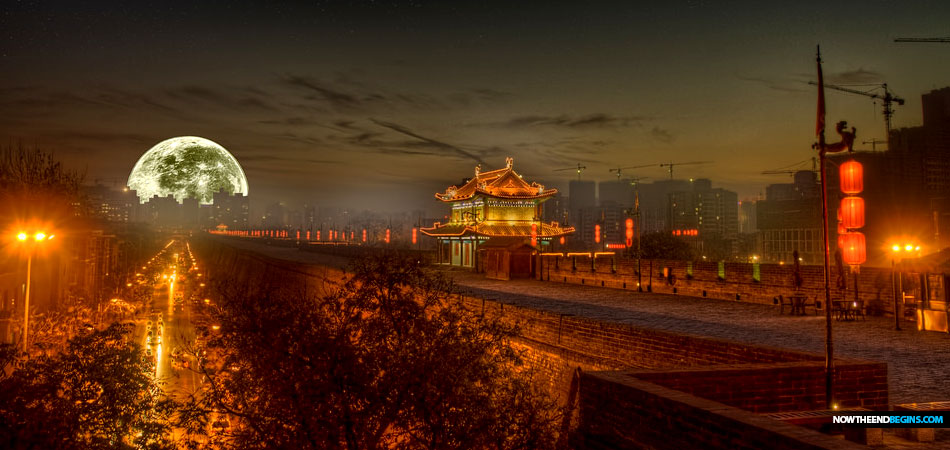
The night skies might soon have company: Chinese scientists are planning to launch an artificial moon into orbit by 2020 to illuminate city streets after dark.
As if the Flat Earth Society didn't already
have enough to worry about, along comes China preparing to launch a giant artificial moon to light up the night skies. The implications of a giant artificial moon hovering hundreds of miles above the earth are somewhat disturbing if you think about it.
"Who is she that looketh forth as the morning, fair as the moon, clear as the sun, and terrible as an army with banners?" Song of Solomon 6:10 (KJV)
If China is able to prove their concept and actually put the artificial moon into orbit, you know that many other countries will follow suit. Can you imagine what life will be like with dozens of these things spanning the globe and turning night into daytime? The end times implications of such a feat are truly staggering.
FROM CHINA DAILY: Scientists are hoping to hang the
man-made moon above the city of Chengdu, the capital of China’s southwestern Sichuan province,
according to a report in Chinese state media. The imitation celestial body — essentially an illuminated satellite — will bear a reflective coating to cast sunlight back to Earth, where it will supplement streetlights at night.
Scientists estimated that it could be eight times more luminous than the actual, original moon. It will also orbit much closer to Earth; about 500 km (310 miles) away, compared to the moon’s 380,000 km (236,000 miles).
The artificial moon will have a reflective coating that can deflect sunlight back to Earth, similar to how the moon shines, he said. The man-made moon is essentially an illumination satellite designed to complement the moon at night, though it is predicted to be eight times brighter, the scientist added.
This is due to the object's planned orbit about 500 kilometers above Earth-much closer than the 380,000-km distance to the moon, Wu said.
"But this is not enough to light up the entire night sky," he said. "Its expected brightness, in the eyes of humans, is around one-fifth of normal streetlights."
The location and brightness of the light beam can be changed, and its coverage accuracy can fall within a few dozen meters, he said. The artificial moon might replace some streetlights in the urban area, thus conserving energy.
Wu estimated Chengdu could save around 1.2 billion ($174 million) yuan in electricity annually if the artificial moon illuminated 50 sq km of the city.
Meanwhile, the extra light can shine into disaster zones during blackouts, thus aiding relief and rescue efforts, he added.
The mirrors can be adjusted for luminosity, and can be completely turned off when needed. However, less light from the satellite will reach the ground if the sky is overcast.
"The first moon will be mostly experimental, but the three moons in 2022 will be the real deal with great civic and commercial potential," Wu said.
READ MORE
No comments:
Post a Comment